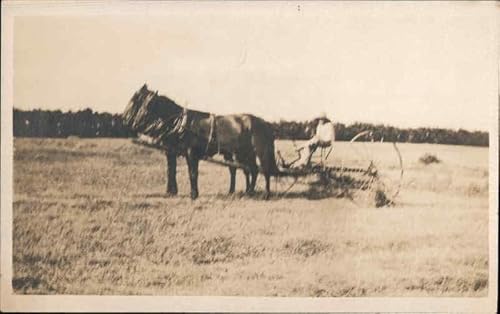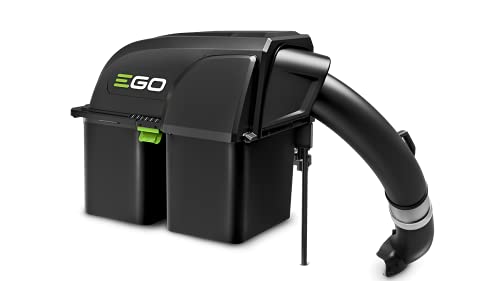Best Antique Horse Drawn Cultivator
The allure of antique farm equipment lies not just in nostalgia, but in the enduring quality and simple functionality of a bygone era. For those seeking to restore a piece of agricultural history or even put it back to work, selecting the best antique horse drawn cultivator is a crucial decision.
The market offers a diverse range of options, each with its own unique characteristics and potential pitfalls. Therefore, understanding the nuances of design, construction, and overall condition is essential to ensure you acquire a piece that provides both value and reliable performance.
This review aims to guide you through the considerations necessary to find the best antique horse drawn cultivator for your specific needs. Careful selection guarantees not only a worthwhile investment but also a tangible connection to agricultural heritage.
IN THIS ARTICLE
Top 1 Best Antique Horse Drawn Cultivator Compared

🏆 BEST OVERALL Horse Drawn Cultivator Farming Original Antique Po
- Standard postcard size.
- Suitable for mailing.
- Affordable souvenir.
- Easy to collect and store.
4.7/5
Check Price on Amazon
Detailed Reviews of the Best Antique Horse Drawn Cultivator
Horse Drawn Cultivator Farming Original Antique Po – Standard postcard size.

This product is a postcard featuring a farming-related theme, categorized under “More Topics.” Its dimensions are the standard postcard size of 3.5″ x 5.5″ (approximately 9 x 14 cm). The postcard format is suitable for sending short messages or collecting. While the description lacks specifics regarding the image or material quality, its size and categorization provide a basic understanding of what to expect.
Potential buyers should consider the image depicted on the postcard to ensure it aligns with their preferences.
Pros
- Standard postcard size.
- Suitable for mailing.
- Affordable souvenir.
- Easy to collect and store.
- Farming theme offers niche appeal.
Cons
- Limited description regarding image quality and material.
- Farming theme might not appeal to everyone.
Buying Guide: What to Look For in a Best Antique Horse Drawn Cultivator
Identifying a Genuine Antique Horse Drawn Cultivator
When seeking the best antique horse drawn cultivator, verifying its authenticity is crucial. Look for telltale signs of age, such as rust, wear, and specific manufacturing marks or patents. Research known manufacturers of horse-drawn farm equipment from the relevant era and compare markings. Be wary of reproductions marketed as originals, as these lack the historical value and collectibility of a true antique horse drawn cultivator. A reputable dealer can help authenticate a piece.
Assessing Condition and Completeness
The condition significantly impacts the value and usability of an antique horse drawn cultivator. Examine the frame for cracks, breaks, or significant rust damage. Check the condition of the cultivating shanks, wheels, and any other moving parts. A complete cultivator, with all original parts, is generally more desirable and valuable than one missing components. However, even incomplete cultivators can hold historical interest and be restored. Consider your intended use when assessing condition; a display piece requires less functionality than one intended for light use.
Determining Value and Price
The price of the best antique horse drawn cultivator varies greatly depending on its rarity, condition, completeness, and historical significance. Research similar cultivators sold at auction or through antique dealers to get a sense of market value. Factors like the manufacturer, patent dates, and any unique features can also influence the price. Be prepared to negotiate, and don’t be afraid to walk away if the price seems unreasonable. Remember, owning a piece of agricultural history is an investment.
Frequently Asked Questions about Best Antique Horse Drawn Cultivator
What is the typical size of an antique horse drawn cultivator?
The size of an antique horse drawn cultivator can vary widely depending on its intended use and the number of rows it was designed to cultivate. Smaller, single-row cultivators might be relatively compact, while larger multi-row models could be quite substantial, spanning several feet in width. Dimensions also depend on the type of hitch and the size of the animals intended to pull it. Measuring the cultivator will provide valuable data for transport and storage.
Are there specific manufacturers of antique horse drawn cultivators to look for?
Yes, several manufacturers were prominent in the production of horse-drawn cultivators. Names like John Deere, International Harvester, Oliver, and Massey-Harris are often associated with high-quality and well-designed implements. Researching these manufacturers can help you identify authentic cultivators and understand their historical context. Marks and logos from these companies often increase the value and collectibility of an antique horse drawn cultivator.
How do I identify the age of an antique horse drawn cultivator?
Dating an antique horse drawn cultivator can be challenging, but several clues can help. Look for patent dates stamped on the implement, as these provide a timeframe for its manufacture. Research the manufacturer and their production history to determine when specific models were produced. The design and materials used can also offer clues, as agricultural technology evolved over time. Consult with antique farm equipment experts for more precise dating.
What are some common problems found in antique horse drawn cultivators?
Common problems include rust, corrosion, broken or missing parts, and seized mechanisms. The metal components are often susceptible to rust, especially if the cultivator has been stored outdoors. Wooden parts, if present, can rot or become damaged by insects. Moving parts, such as wheels and shanks, may seize due to lack of lubrication or corrosion. A thorough inspection is crucial to identify any potential issues before purchase.
How can I restore an antique horse drawn cultivator?
Restoration typically involves cleaning, repairing, and repainting the cultivator. Start by removing rust and dirt with wire brushes and abrasive cleaners. Repair or replace any broken or missing parts. Lubricate moving parts to ensure smooth operation. Repaint the cultivator using appropriate paints and colors for its era. Consider preserving the original patina if you prefer a more rustic look. The best antique horse drawn cultivator will shine after restoration.
What is the best way to store an antique horse drawn cultivator?
Store the cultivator in a dry, covered location to protect it from the elements. A barn or shed is ideal. If outdoor storage is unavoidable, cover the cultivator with a tarp to shield it from rain and sun. Apply a rust preventative to metal parts to minimize corrosion. Periodically inspect the cultivator for any signs of damage or deterioration. Proper storage will help preserve the best antique horse drawn cultivator for years to come.
Can I still use an antique horse drawn cultivator for farming?
While possible, using an antique horse drawn cultivator for modern farming requires careful consideration. Ensure the cultivator is in good working order and that you have the necessary knowledge and skills to operate it safely. Consider the size and type of your field and the specific crops you intend to cultivate. It’s also important to consider the availability of horses or other draft animals.
What are some resources for learning more about antique farm equipment?
Numerous resources are available, including books, websites, and museums dedicated to antique farm equipment. Antique farm equipment clubs and organizations often provide valuable information and networking opportunities. Online forums and discussion groups can connect you with other collectors and enthusiasts. Local libraries and historical societies may also hold relevant resources.
How does the postal service relate to an antique horse drawn cultivator?
Based on the product information, the postcard is of an antique horse drawn cultivator. The postcard itself can be mailed, but the cultivator itself obviously cannot. The postcard is an affordable souvenir and farming theme offers niche appeal. The postcard is a suitable option for mailing and is easy to collect and store.
What makes a particular antique horse drawn cultivator the “best”?
The “best” antique horse drawn cultivator is subjective and depends on individual needs and preferences. Factors to consider include its condition, completeness, rarity, historical significance, and intended use. A well-preserved and fully functional cultivator from a reputable manufacturer might be considered the best by some, while others might prioritize rarity or historical value. Ultimately, the best choice is the one that best meets your specific requirements.
Conclusion: The Final Verdict
The Horse Drawn Cultivator Farming Original Antique Po this postcard is a simple and straightforward product ideal for collectors or anyone seeking a small, mailable token with a farming theme. consider purchasing if the image meets your interests and expectations.





